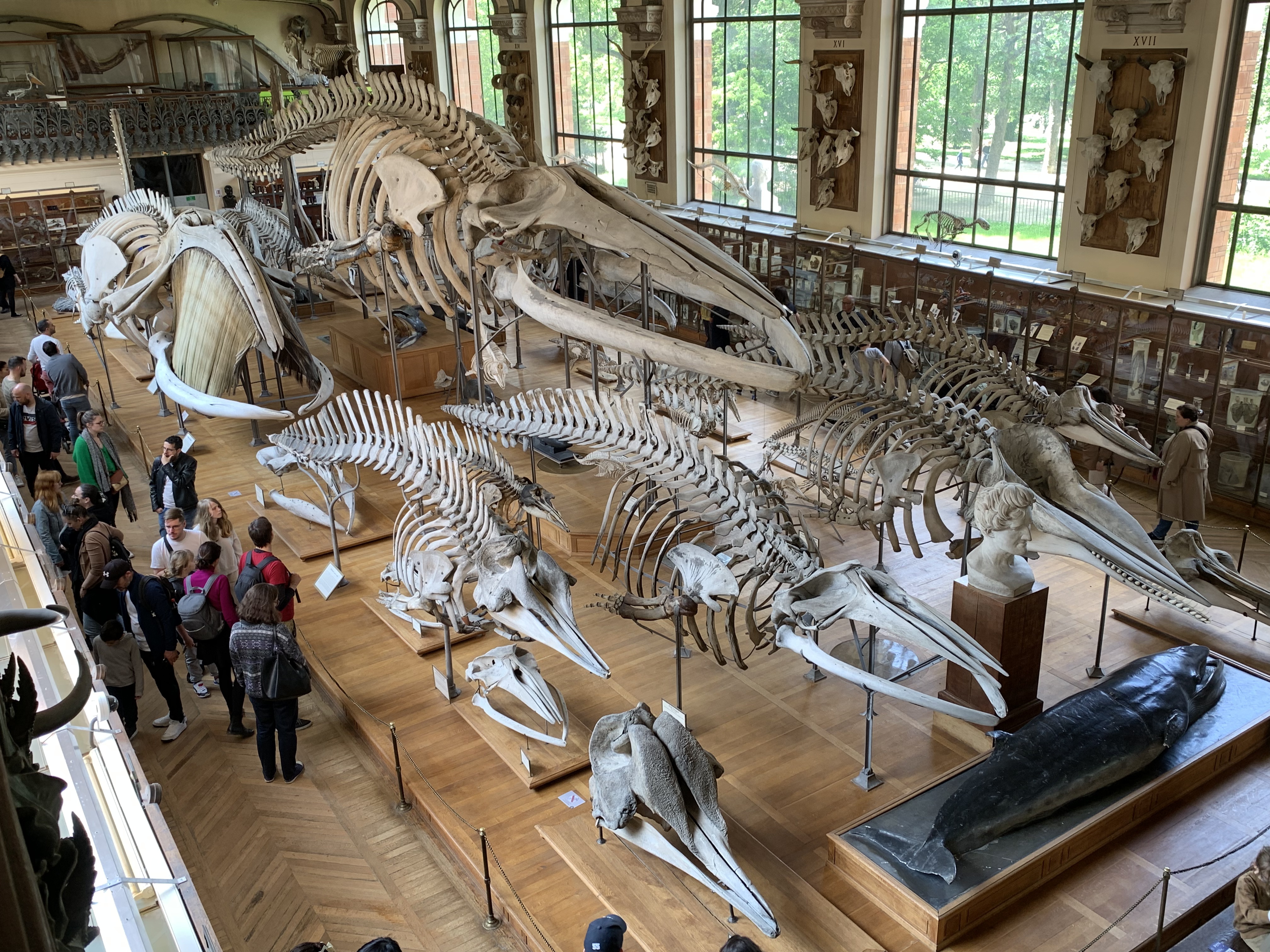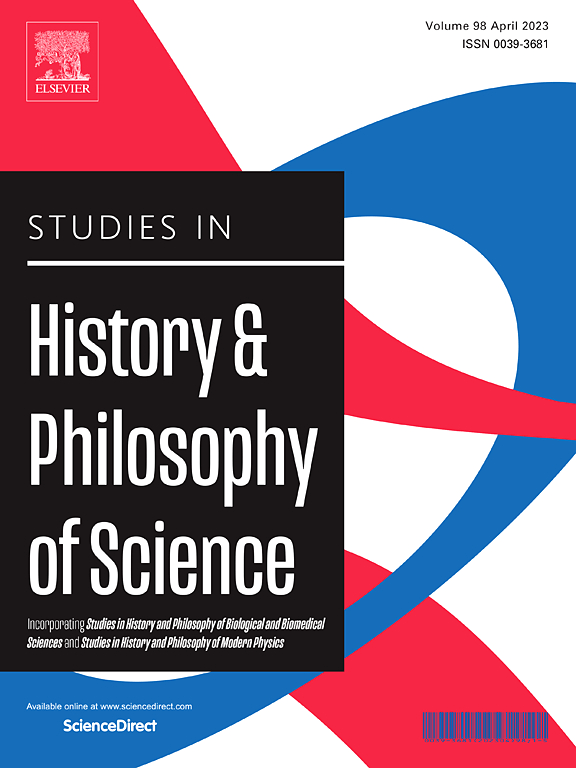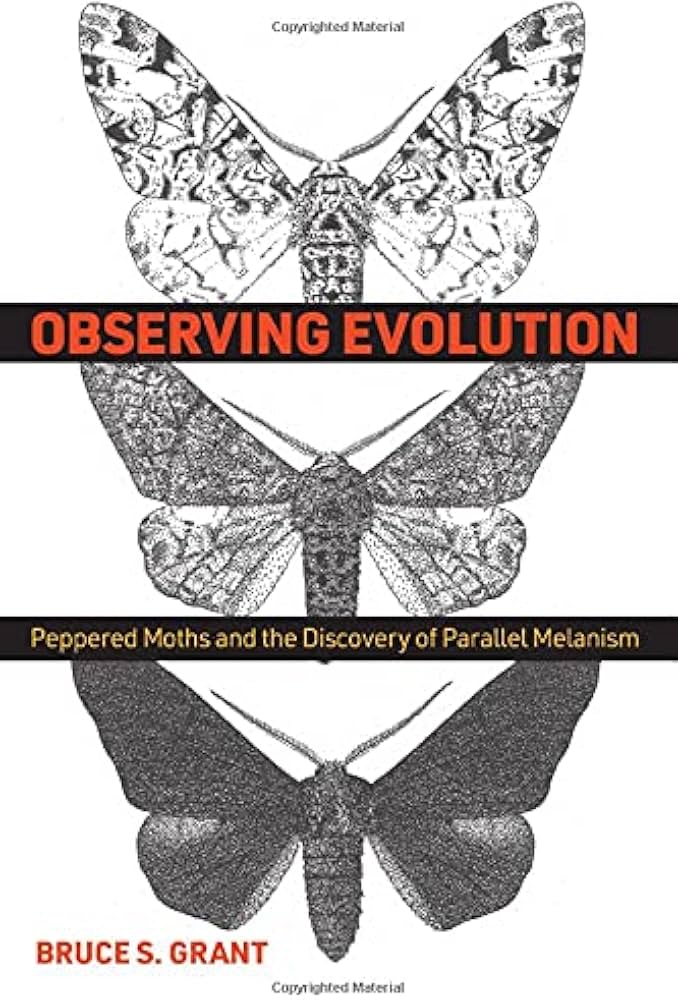
Research
Research Overview
I am fascinated by evolution, and perhaps even more fascinated by the strategies that biologists use to explain it. When biologists provide evolutionary explanations of the natural world, they cannot help but make metaphysical claims. These are often claims about how the world is structured, what causal processes are at play in evolution, what kinds of individuals evolve, etc. However, pinning down a concept such as “causal process” or “individual” is notoriously difficult, let alone one that enjoys consensus among practitioners. In these cases, when biological practice is tied up in conceptual knots, the philosopher of biology can help untangle them. The conceptual knots that are central to my research, and the methods of investigation they motivate, are characterized by two main themes.
Biological Metaphysics
I am interested in places where biological practice and analytic metaphysics intersect. For example, consider two kinds of biological processes: those that occur at the level of individual organisms (like a caterpillar metamorphosing into a butterfly) and those that occur at the level of entire populations (like the adaptive evolution of eyespots on butterfly wings). These kinds of processes are referred to as “proximate” (pertaining to development) and “ultimate” (pertaining to evolution). What is the relationship between these two kinds of processes, given that they occur at different “levels” of the biological hierarchy? Is it a relationship of cause and effect? Or is it a relationship between parts and wholes? These are metaphysical questions, and their answers help determine the content of our biological explanations. “Individuality” is another metaphysically contentious concept with implications for biological practice. Biologists require an account of what it means to be an “individual” if they are to claim, for example, that one individual is better adapted than another. How, then, does natural selection discriminate between individuals? If an organism can be acted upon by natural selection, then what about an organism and its microbiome, an organism and its habitat, or even whole communities of organisms?
In pursuing these questions, I seek to achieve a reflective equilibrium between empirical and metaphysical accounts of the natural world. Sometimes I argue that we must abandon long-held metaphysical principles in light of progress in biology. Other times, however, I argue that an empirically informed metaphysics puts pressure on—and perhaps even undermines—popular concepts in evolutionary theory.
Biological Practice
In addition to metaphysical inquiry, another way of doing philosophy of biology is to simply go and talk to the biologists themselves. I employ a methodology often referred to as “experimental philosophy.” It combines the tools of psychology and the social sciences—tools such as surveys and interviews—to gain a more systematic understanding of how biologists think about the concepts that feature in their research. In my work, I explore whether evolutionary biologists and ecologists are compelled by emerging criticisms of standard evolutionary models—criticisms that depict these models as privileging genes and environments in evolution, while neglecting the role of organismal agency. Do biologists think such a criticism is warranted? And even if it is, does it have implications for their everyday research practices? Moreover, what do these surveys of biological practice say about the claim—often proposed by proponents of a “practice turn”—that we are justified in “reading off” our ontology from evolutionary models?
Beyond Biology
My intellectual home is philosophy of biology, but I maintain broad interests in philosophy of science. I am always hunting for connections between my work and other issues in the field. For example, I have attempted to bridge a gap between biology and aesthetics by recognizing where insights from the former (namely, those found in the literature on the “species problem”) can be deployed to resolve a dispute in the latter (namely, whether “art” is definable). Additionally, I have written on the history and philosophy of physics, specifically with respect to Newtonian matter theory. In this project, I investigate the relationship between Newton’s bodies and his laws of motion and nature. Finally, I am collaborating with a team of ethologists and psychologists on a project in experimental philosophy, wherein we survey beliefs among researchers about animal emotions and consciousness.
Publications
You can find abstracts for my publications below. Click on the title of a paper to be redirected to the publication. If you would like a reprint, please do not hesitate to email me.
Reciprocal causation is the view that adaptive evolution is a bidirectional process, whereby organisms and environments impinge on each other through cycles of niche construction and natural selection. I argue, however, that reciprocal causation is incompatible with the recent view that natural selection is a metaphysically emergent causal process. The emergent character of selection places reciprocal causation on the horns of dilemma, and neither horn can rescue the causal interdependency between selection and niche construction. Therefore, I conclude that proponents of an “extended evolutionary synthesis” must abandon the claim that the process of natural selection features in cycles of reciprocal causation.
Among the existing accounts of the relationship between Newton’s bodies and laws, two are especially compelling: the “law-constitutive” approach from Katherine Brading and the “formal-cause” approach from Zvi Biener and Eric Schliesser. Both accounts argue that Newton’s bodies are (at least partially) metaphysically dependent on his laws. In this article, I reply to Brading, Biener, and Schliesser. I develop negative arguments against their approaches by closely examining three features of Newton’s ontology—forms, particles, and active principles—and their relationship to the laws. I also offer an explanation as to why “law-first” approaches have (understandably) dominated recent Newtonian exegesis. Finally, I present a positive argument for what I believe to be a superior alternative: Newton’s law-first approach is purely pragmatic. It is a feature of his experimental philosophy that we should begin our inquiry into the metaphysical constituents of the universe with the laws that arise from them. This does not entail, however, that Newton views laws as constituting or forming physical bodies. Newton’s metaphysics should be interpreted as “matter-first,” with bodies giving rise to laws, whereas his epistemology should be interpreted as “law-first,” with knowledge of laws giving rise to knowledge of bodies.
Arguments for an extended evolutionary synthesis often center on the concept of “reciprocal causation.” Proponents argue that reciprocal causation is superior to standard models of evolutionary causation for at least two reasons. First, it leads to better scientific models with more predictive power. Second, it more accurately represents the causal structure of the biological world. Simply put, proponents of an extended evolutionary synthesis argue that reciprocal causation is empirically and explanatorily apt relative to competing causal frameworks. In this paper, I present quantitative survey data from faculty members in biology departments at universities across the United States to evaluate this claim. The survey data indicate that a majority of the participants do not agree (i.e., most either disagree or neither agree nor disagree) that the concept of reciprocal causation confers a larger advantage on research practices. However, a majority of the participants agree that the causal framework of the extended evolutionary synthesis more accurately represents the structure of the biological world. These results demonstrate that the explanatory merits of a conceptual framework and its practical utility can come apart in interesting and informative ways.
Marc Ereshefsky’s project of eliminative pluralism holds that, as there is no unifying feature among all species concepts, we ought to doubt the existence of the species category. Here, I argue that one promising strategy for saving the species category is to reframe it as a natural kind after the practice turn. I suggest situating the species category within a recent account of natural kinds proposed by Marc Ereshefsky and Thomas Reydon called “scientific kinds”. Scientific kinds highlight ontological boundaries. More importantly, they recognize boundaries drawn from the lab and the field, not only from the armchair. The point of this exercise is to situate the species category within an account of natural kinds that is sensitive to scientific practice. In order to argue for a realist interpretation of the species category, and not merely a pragmatic one, I rely on an approach to scientific metaphysics from Ken Waters that shifts the attention from “theory focused” to “practice-centered” analysis.
with Fred Nijhout and Anna Kudla
Genetic assimilation and genetic accommodation are mechanisms by which novel phenotypes are produced and become established in a population. Novel characters may be fixed and canalized so they are insensitive to environmental variation, or can be plastic and adaptively responsive to environmental variation. In this review we explore the various theories that have been proposed to explain the developmental origin and evolution of novel phenotypes and the mechanisms by which canalization and phenotypic plasticity evolve. These theories and models range from conceptual to mathematical and have taken different views of how genes and environment contribute to the development and evolution of the properties of phenotypes. We will argue that a deeper and more nuanced understanding of genetic accommodation requires a recognition that phenotypes are not static entities but are dynamic system properties with no fixed deterministic relationship between genotype and phenotype. We suggest a mechanistic systems-view of development that allows one to incorporate both genes and environment in a common model, and that enables both quantitative analysis and visualization of the evolution of canalization and phenotypic plasticity.
with Michelle D’Aguillo, Brandie Quarles, and Kathleen Donohue
Evolvable traits of organisms can alter the environment those organisms experience. While it is well appreciated that those modified environments can influence natural selection to which organisms are exposed, they can also influence the expression of genetic variances and covariances of traits under selection. When genetic variance and covariance change in response to changes in the evolving, modified environment, rates and outcomes of evolution also change. Here we discuss the basic mechanisms whereby organisms modify their environments, review how those modified environments have been shown to alter genetic variance and covariance, and discuss potential evolutionary consequences of such dynamics. With these dynamics, responses to selection can be more rapid and sustained, leading to more extreme phenotypes, or they can be slower and truncated, leading to more conserved phenotypes. Patterns of correlated selection can also change, leading to greater or less evolutionary independence of traits, or even causing convergence or divergence of traits, even when selection on them is consistent across environments….
In this paper, I argue that ‘art’, though an open concept, is not undefinable. I propose a particular kind of definition, a disjunctive definition, which comprises extant theories of art. I co-opt arguments from the philosophy of science, likening the concept ‘art’ to the concept ‘species’, to argue that we ought to be theoretical pluralists about art. That is, there are a number of legitimate, perhaps incompatible, criteria for a theory of art. In this paper, I consider three: functionalist definitions, procedural definitions, and an intentional-historical definition. The motivation for this pluralism comes from an analysis of practice, because the term is of apparent value to practitioners. However, a closer analysis of the concept reveals that, while disjunctive definitions help us to understand how we use certain terms (in other words, their pragmatic value), they lack ontological import. In sum, I attempt to glean lessons from the philosophy of science about the philosophy of art. If my analysis is correct, we ought to be eliminative pluralists about art as a concept.
Book Reviews
Works in Progress
The Unbearable Lightness of Intervening: A Realist Metaphysics for Manipulability Theories of Causation
with Yasmin Haddad
Interventionism is often considered to be a metaphysically light account of causation on the grounds that it avoids ontological commitments such as an account of the true nature of causes. Contrary to these claims, we argue that interventionism is—ontologically speaking—actually quite rich. Even though interventionism is argued to be a functional (or methodological) account of causation, there is no reason why interventionism should not be compatible with (or perhaps even ground) a metaphysical account of causation. We argue that insofar as interventionism is committed to ‘modest realism,’ it can and should be conceptualized as an ontologically rich theory of causation. To do so, we rely on insights from Chang’s (2022) notion of operational coherence. We illustrate our claims by analyzing the notion of ‘downward causation’.
with Matthew Zipple, Marcela Benítez, and Mackenzie Webster
Do animals have emotions? Scientists and philosophers have long struggled with this question, with debates ranging from whether animals experience an “internal world” to whether we are capable of studying it. Recently, theoretical, and methodological advances have rekindled this debate, yet, it is unclear where the scientific consensus on these topics lies today. To address this gap, we administered a survey of professional animal behavior researchers to assess perceptions regarding (1) the taxonomic distribution of emotions and consciousness in non-human animals, (2) respondents’ confidence in this assessment, and (3) the potential for progress and possible pitfalls when addressing these questions. Animal behavior researchers (n=100) ascribed emotionality and consciousness to a broad swath of animal taxa, including non-human primates, other mammals, birds, and cephalopods, with varying degrees of confidence. There was a strong positive relationship between how likely a respondent was to attribute emotions and consciousness to a given taxa and their confidence in that assessment, with respondents assuming an absence when they were unsure. In addition, respondents’ assessments were shaped by several traits (e.g., advanced cognitive abilities, consciousness) that they also admitted were not necessary for an animal to experience emotions. A large majority of researchers were optimistic that tools either currently or will later exist to rigorously address these questions (>85%) and that animal behavior, as a field, should do more to encourage emotions research (71%). We discuss implications for publication bias, ethical considerations, and identify an emergent consensus of a functional definition of emotions to facilitate future work.
Metaphysics and Philosophy of Biology
with Charles Pence
Abstract TBA








